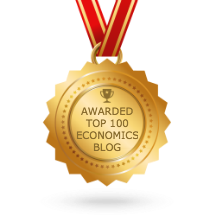The post is below. It is featured in Introduction to Microeconomics by Luís Cabral. He is chair of the economics department at New York University.
Here is an excerpt from the book followed by the post from May 27, 2019:
"Once you get into the mechanics of comparative statics, it should come naturally to interpret real-world events as shocks to demand and supply curves, which in turn lead to adjustments in price and transaction volumes. Consider some recent events in the honey industry, as described in Box 7.1 (source: Cyril Morong). The left column includes a series of quotes from a Wall Street Journal article on the honey industry. The right column, in turn, includes a series of comments on how to interpret these events in terms of the model of supply and demand." (see pages 274-75 of Dr. Cabral's book)
Why honey prices have climbed about 25% since 2013
"Honey prices are starting to sting.
Global honey prices are at their highest levels in years, due to a new wave of consumer demand for natural sweeteners [demand increases because tastes or preferences increased with the opposite happening for sugar] and declining bee populations that are hampering mass production [supply decreases]."
"In addition, it is being used more as an ingredient in shampoos, moisturizers and other personal-care products that companies market as naturally made [another increase in demand due to tastes]."
"Retail honey prices world-wide recently averaged $4.69 a pound, according to market research firm Euromonitor International. Prices have climbed about 25% since 2013, while the cost of sugar has fallen around 30% over the same time frame."
"U.S. retail prices averaged $7.66 a pound in May, up 9% from a year earlier"
"Those prices have risen by about two-thirds in the last decade"
"Americans consumed 596 million pounds of honey in 2017, or an average of nearly two pounds per person—up 65% since 2009 [if demand shifts right, we expect both price and quantity to increase]."
"It has been touted by celebrities—including tennis star Novak Djokovic—for its health benefits and numerous scientific studies have shown it can help heal wounds, ulcers and burns [maybe this is part of the reason tastes increased]."
"Global honey production has been relatively stable over the past five years [but if supply shifted left that could cancel out the demand increase and leave quantity the same]."
"In the U.S., honey production peaked in 2014 and has fallen 15% since then [if supply shifted more to the left than demand shifted to the right, total Q falls-maybe the increased American quantity means less for consumers elsewhere]."

No comments:
Post a Comment